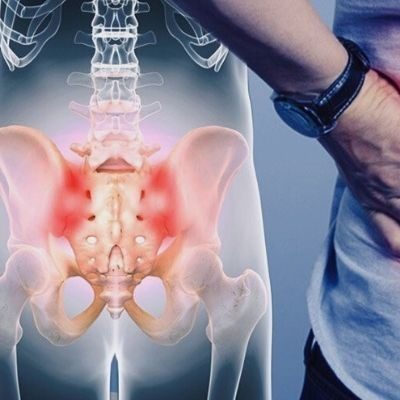Lower Back and Leg Pain Resulting from Irritated or Injured SI Joints
One of the most common causes of low back and pelvic pain occurs with injuries to the sacroiliac (SI) joint and ligaments.
SI Joint Dysfunction Facts & Information
If you are experiencing the seemingly unbearable symptoms of SI joint dysfunction, it’s important to have an accurate diagnosis with thorough tests and evaluations. Oftentimes, sacroiliac (SI) joint dysfunction is difficult to diagnose because the pain patterns are frequently mistaken for nerve irritation in the lower back, muscles sprains, or hip bursitis.
How & Why Does SI Joint Dysfunction Develop?
First, it’s key to understand that the SI joint connects the pelvic bone (ileum) to the lowest part of the spine (sacrum). There are two SI joints. Each is located on either side of the sacrum. SI joints are small and very strong, providing structural support and stability. They function as shock absorbers for the pelvis and the low back, dispersing the forces of the upper body. Whenever an SI joint is irritated or injured, the resultant joint dysfunction may cause pain in the lower back and legs.
SI joints become painful because of alterations in the normal motion of the joints. Consider the following:
► Two types of changes from normal motion can cause problems
► Those changes are either too much movement (hypermobility) or too little movement (hypo-mobility)
► Abnormal motion from work/sports can directly injure the joints via stretching/straining the primary SI ligaments
► Any of these changes in joint mobility may lead to pain, as well as spasms in the supporting back and pelvic muscles
► SI joint dysfunction may also result from direct trauma, such as injuries associated with a motor vehicle accident
► Or an injury from something as simple as a fall on the buttocks or a missed step when descending stairs
Symptoms:
► Pain in the lower back
► Generally aggravated by sitting, standing, or bending at the waist
► When severe, there will be a pain in the hip, groin, and legs
Diagnosis:
Proper diagnosis starts with an experienced pain management doctor. The type of pain that you may have with SI joint dysfunction can be similar to the symptoms of several types of disorders. Accurately determining the correct source of your pain is critical to successful treatment.
► Begins with a thorough clinical evaluation
► Including a complete medical history, analysis of your symptoms, and physical examination
► Testing may include x-rays, MRI and/or CT scans, electro-diagnosis (EMG)
►These advanced diagnostic techniques definitively pinpoint the source of pain
Possible Treatments:
►SI Joint Injection
►Radiofrequency Ablation
►Platelet Rich Plasma (PRP Therapy)

